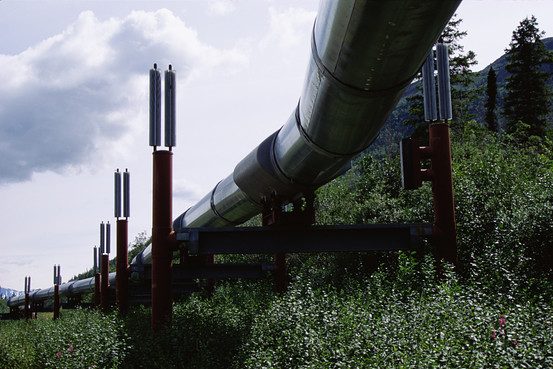Blog
Gov. Sean Parnell: What's the Hold-Up on Alaskan Oil?My state's ANWR region could produce one million barrels of oil per day if only Washington let us.
WASHINGTON, D.C.,
February 10, 2012
|
Governor Sean Parnell (R-AK)
This bill ties energy production to key projects that would generate well-paying jobs sorely needed for our economy and our energy security. It also enables us in Alaska to pursue production on a small section of the Arctic National Wildlife Reserve (ANWR). This legislation opens 400,000 acres of the ANWR coastal plain's 1.5 million acres—land specifically set aside (by a 1980 federal law) for oil and natural-gas development. The 400,000 acres represents less than 3% of ANWR's 19 million total acres. So what have we been waiting for? Twenty-five years ago, the U.S. Department of the Interior recommended that Congress open up this area for oil and gas development. Yet year after year, Washington has blocked Alaska from delivering America's oil to Americans, even as the Energy Department calculates that for every barrel produced from ANWR, one less barrel of imports would be needed. The federal government must drop these roadblocks. This should not be controversial: The vast majority of Alaskans favor the oil and gas development of this small portion of ANWR. Nor does this have to be a partisan issue: Three Democrats joined 26 Republicans in the 29-13 vote. The essence of this long-standing argument is this: Greater oil and gas production means jobs and economic growth, which develop the stable communities that underpin a strong nation. Somehow this reasoning continues to fall flat. Just last month, President Obama said in his State of the Union address that he had directed his administration to "open more than 75% of our potential offshore oil and gas resources." He should have said "redirected," for this simply repackaged his current position on the Outer Continental Shelf, which slowed Arctic development and did nothing to advance ANWR's potential. ANWR oil—more than 10 billion barrels of it—is accessible. It's extractable. Yet we wait. Ignoring promising domestic production means willingly accepting a steady diet of foreign oil. That's exactly what's happening. At peak production, ANWR could supply the U.S. with up to 1.45 million barrels of oil per day. Over 10 years, it could produce a sustained rate of one million barrels per day. We have a world-class pipeline ready to assist with delivery. We currently ship slightly more than 600,000 barrels of oil a day through the Trans Alaska Pipeline, but that figure once stood at two million per day. With oil from ANWR in the Trans Alaska Pipeline, oil producers could develop nearby fields that otherwise might not be economically feasible. We have a chance to make this happen under a measure cowritten by House Natural Resources Committee Chairman Doc Hastings (R., Wash.) and Rep. Don Young (R., Alaska) within the American Energy Infrastructure & Jobs Act. It's the Alaska Energy for American Jobs Act, which will:
Protecting our lands has long been a priority in Alaska. Prudhoe Bay, which sits 60 miles west of ANWR, has churned out 16 billion barrels of oil over more than 30 years. During that time, the central Arctic caribou herd in the Prudhoe Bay area has grown to nearly 70,000 in 2008 from 5,000 in 1975. It's no coincidence that the states holding their own during this prolonged economic downturn include America's major energy producers, such as Alaska. Yet regulators keeping federal lands off-limits to oil and gas production also keep Alaska from contributing more affordable energy to other Americans. For those who don't believe one state can make a difference in helping our nation, just look at the boom in North Dakota. The Bakken region is producing nearly 500,000 barrels of oil per day, pushing North Dakota's unemployment rate down to 3.5%, among the lowest nationally. If the Obama administration is serious about job creation, it can look to Alaska to boost America's work force. These are jobs Americans can do immediately. They are drillers, drivers and roustabouts, engineers, graphic designers and geologists, plumbers, painters and educators. We don't have to make out-of-work Americans wait any longer. Mr. Parnell is governor of Alaska. Cross-posted at Wall Street Journal. |
Newsletter Sign Up
Sign up to receive news, updates and insights directly to your inbox.

